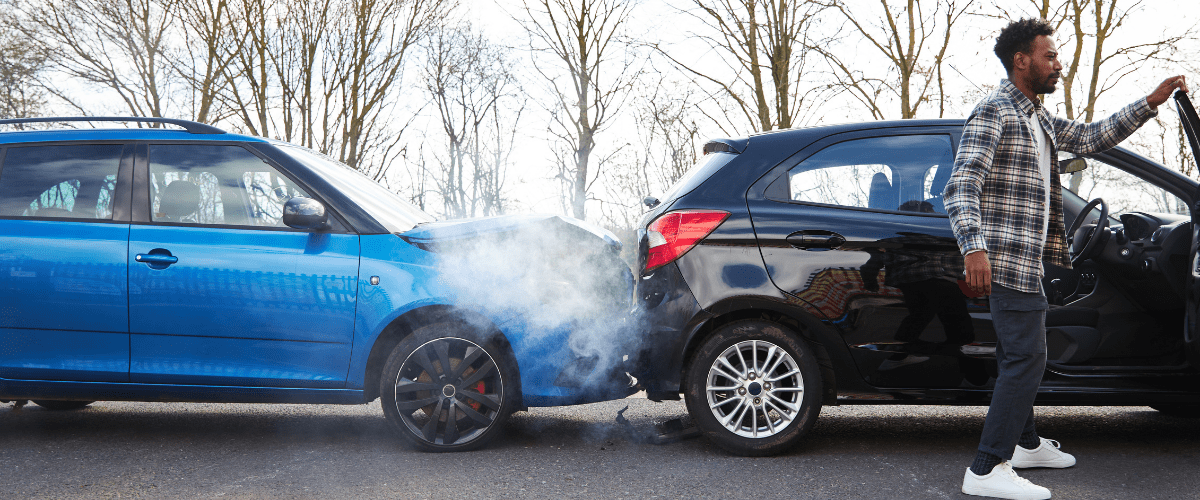11 November 2025
From 16th-22nd November 2025, Britain’s road safety charity Brake holds its annual Road Safety Week that campaigns to raise awareness about the danger behind driving, how to use your vehicle safely, and the prevention of serious injuries and death due to road traffic accidents.
Thousands of schools, organisations and communities get involved every year to spread this life-saving message and highlight the vital work of Brake’s National Road Victim Service which provides free expert support to those affected by road crashes.
What are the potential hazards we face on the road?
The leading cause of accidents on the road is driver error, and one of the most common types of collisions we see is where an involved party is hit in the rear.
The Highway Code provides a guide to the typical stopping distances. However, these times are dependent upon your attention, the road surface, weather conditions and the condition of your vehicle. While The Highway Code suggests the typical stopping distance for someone driving at 30mph is 23 metres, Brake states the average stopping distance is 11 metres more than the official guidance. This will be further impacted by wet and icy road conditions which can double the distance.
Another factor to safe stopping distances will be where you are driving. Town and city roads will pack more people closer together, with stricter restrictions that often cause impatience and ultimately leads to speeding. Driving on country roads often involves narrower lanes with tighter corners and little restriction on speed. There’s also a higher possibility of animal crossings and weather-related damage such as flooding or fallen trees.

If a butterfly flaps its wings…
A small decision, like a quick tap of the brakes, can set off a chain reaction. Japanese researchers conducted a study that looked into the remarkable impact of how one driver’s decision to slow down can cause a ripple effect that results in unnecessary traffic jams. The video demonstrates how little it takes to cause the shockwave, and once you factor in multiple lanes or surface works, traffic signals and poor attention while driving, the impacts of this can cause multiple perils in even the simplest of journeys.
Link to article here
How dangerous can a simple reach backwards be?
Distractions can be deadly, especially when it comes to the people in your vehicle. Passengers can distract drivers by complaining, blocking mirrors, or even just discussing the results of last night’s game. Even those trying to be helpful by backseat driving, providing unwanted advice or encouraging risky moves, can break your concentration and raise stress levels, especially for new drivers. Children add further challenges with crying, shouting, and demanding attention, all of which pull focus from the road.

Even a brief glance away can significantly delay your reaction times. Brake reports that just a one-second delay at 30 mph adds 9 metres to your stopping distance. Reaching into the back seat increases the time it takes to react by 172%, while texting raises it by 132%.
Your own emotions can be just as distracting. When frustration boils over behind the wheel, drivers turn into risks on the road. Angry driving fuels reckless behaviours such as following too closely, sudden braking, and aggressive intimidation.
Safer driving starts with you
Driving involves battling against many hazards, some of which are in our control while others are not. It is important during this Road Safety Week to consider how we and our clients can take better care in our duties as road users. We’ve provided you just some of these potential hazards, but there’s many more that will have sprung to mind during your consideration of this topic. Minimising and being more aware of these distractions helps drivers stay focused on the road, creating a safer place for everyone.
Sources: stopping distances
Gov.uk: driving in adverse weather
https://www.theaa.com/breakdown-cover/advice/stopping-distances
https://www.brake.org.uk/get-involved/take-action/mybrake/knowledge-centre/speed/stopping-distances
https://www.gov.uk/guidance/the-highway-code/driving-in-adverse-weather-conditions-226-to-237
Sources: city vs countryside driving
